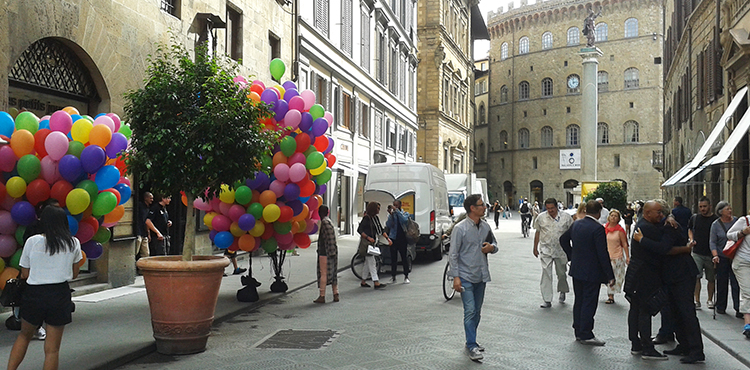
San Giovanni, the night between magic and tradition
This year, Florence will not have its beautiful fireworks in honor of San Giovanni, patron of the city. The “fires” as they are called here in Tuscany, have been one of the most beloved and followed traditions for centuries. However, as a result of the COVID 19 epidemic, for this party, like many others, we will have to wait until next year. The mayor, Dario Nardella, has announced that there will be an online event on June 24, as will happen in Turin and Genoa, other cities in Italy that share the cult of the Saint with Florence. But why is this tradition so important to provoke much sadness at its absence and the need to commemorate it, even in a different way, despite everything?
The Roman Florence had chosen the god Mars as its protector and nothing changed until the 6th century AD, when the Longobardi, who controlled the city, decided that San Giovanni Battista would be the new patron, even though, the official celebration of the saint took place on the thirteenth century. Most of the original festival traditions have been preserved, with a few exceptions. For example, there is no longer the Palio dei Cocchi, a horse and carriage race that took place on June 23 at Piazza Santa Maria Novella. Even today, the two obelisks that decorate the square recall the existence of the canopy, commissioned by Cosimo I and which lasted until 1858.
The various processions that traverse the city and link the most important buildings remain a central attraction of the celebrations: from Palazzo Vecchio to the Baptistery and the Cathedral for the mass and offering of votive candles. Then, from Piazza Santa Maria Novella to Piazza Duomo and Piazza della Signoria, to finish at Piazza Santa Croce. At one point, the union between the Duomo and the Baptistery was made even more evident thanks to a canvas roof that connected the two buildings calling it heaven. The city authorities, the figures of the historical procession and the Florentine clergy participate in these parades.
As the day progresses, the civic and religious tone is set aside with the last game of the famous Calcio Storico, where the four districts of the city center face each other (the blues of Santa Croce, the whites of Santo Spirito, the reds Santa Maria Novella and the greens of San Giovanni) tackling in one last challenge (the goal of this ancient sport) and also in a last blow! The day ends with the fires, which were initially nothing more than a large bonfire lit under the Loggia dei Lanzi. Later, with the discovery of gunpowder, real fireworks were design, which today are based on the suggestive Piazzale Michelangelo.
If the celebrations for San Giovanni currently take place only on June 24th, in ancient times they began on the 21st, just with the northern hemisphere summer solstice. In fact, this appointment, before being a day in the Christian calendar, was in all respects a pagan holiday. Just as in the case of the cult of the Saint, a symbol of moral and political justice, aspired to a just government, through pagan rites it was a matter of stimulating the force of the rays of the sun that, from that day, begin to lose power until reaching the winter solstice.
This period of the year, and in particular the night between June 23 and 24, is recognized as a magical moment by many cultures, even distant from each other. Especially in the Middle Ages, the “night of the witches”, arrived immediately after the summer solstice, it was a time of rebirth where rituals related to fertility, harvest, summer and land in general were established. The symbol plant was the hypericum, or flower of San Giovanni, considered a remarkable remedy against evil spirits. In the transition between spring and summer, even in the Tuscan countryside, hypericum turns grasslands yellow and, along with other medicinal herbs, continues to be the protagonist of small rituals, such as the production of hypericum oleolite, a reddish-colored oil (such as San Giovanni’s blood) obtained from flower maceration and a useful remedy against sunburn and erythema. Another custom is to prepare the San Giovanni water: after carefully collecting aromatic herbs, wild flowers and seasonal plants, everything is put in a jug with water, which will be exposed to the moonlight. The water will be used for washing the following morning, as a symbol of rebirth and purification.
A final curiosity: in Italian there is the proverb “San Giovanni does not want deceit”. If some people attribute the meaning of this saying to the saint’s inflexible and fair character, many others, especially in our area, link this phrase to the prestigious golden florin, first minted in Florence in the mid-13th century. This coin had on the right the image of a lily flower, while on the back the figure of San Giovanni. The latter, difficult to reproduce, combined with the fact that the coin was completely gold (it was very heavy and therefore recognizable), two elements that made forge forgery extremely difficult. In fact, the Saint left no room for deception!


